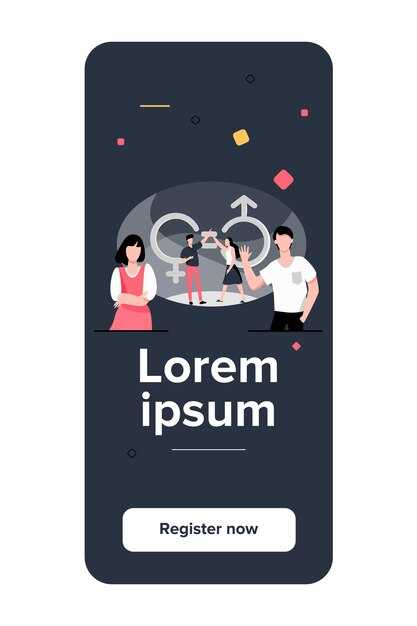Okay, I’ve come across a relationship trick you really should try. I can’t fully explain why it works, but when I start a conversation with Emily by asking, “Hey, what are three specific things I can focus on this week that would make you feel appreciated, loved, or valued?” — and then actually follow through on those things consistently without her having to remind me — something almost magical happens: my needs often get met more easily, too. Honestly, I don’t know the exact mechanics, but when I intentionally do what helps her feel safe, prioritized, and respected, she seems more willing to meet my needs without me having to ask. And listen, if you ever feel neglected in your relationship, whether you’re male or female, that’s an issue worth bringing to a counselor; you deserve to be prioritized, to be heard, and to be truly understood. Now, ladies — if you’re watching this and feeling frustrated that your man isn’t initiating this kind of question — consider being the one to start. I’m not suggesting you aren’t already going above and beyond; rather, let’s model the behavior we’d like to see. Be the best version of yourself, be the change you’re hoping for; don’t let bitterness or resentment creep in. Stay gentle, loving, and thoughtful — overwhelm him with kindness — and ask every single week, “What are three specific things I can do this week to help you feel loved and valued?” Drop his answers in the comments because I’m really curious to know what he says.
Why this works (briefly): when you ask for three specific, actionable items you make it easy for your partner to tell you what actually matters to them. Specific requests reduce guessing, show curiosity and care, and create small wins that build trust. Repeated, small behaviors often change the emotional tone of a relationship more than grand gestures. This also taps into reciprocity and the sense that both partners are intentionally investing in each other.
How to use the hack effectively:
- Make it a short ritual. Pick a consistent time each week (Sunday evening, after dinner, etc.) for a 2–5 minute check-in.
- Ask for specifics. Instead of “be nicer,” ask for concrete actions like “text me a hug emoji mid-day,” “spend 20 minutes with me without screens,” or “help with bedtime routine three times this week.”
- Clarify priorities. Ask follow-ups like, “Which of these matters most?” or “Would you prefer this on weekdays or the weekend?”
- Agree on reminders. Decide together whether a gentle reminder is welcome if you slip up.
- Track follow-through. Mentally note or jot down what you agreed to and check it off during the week—consistency builds credibility.
Examples of three specific things (by common preferences):
- Words of affirmation: “Tell me two things you appreciate about me each morning,” “leave a love note on the mirror,” “praise me in front of friends once this week.”
- Quality time: “Plan one 60-minute phone-free date,” “go for a 20-minute walk together three times,” “cook dinner together Wednesday night.”
- Acts of service: “Take over the laundry this week,” “fill up my car with gas one morning,” “make my coffee on Saturday.”
- Physical touch: “Hug me when I come home,” “hold hands on the couch,” “give me a 10-minute back rub before bed.”
- Gifts: “Bring a small treat home,” “surprise me with a note in my bag,” “pick one book and read a chapter to me.”
Communication tips to keep it positive and safe:
- Use curiosity not blame: open with “What can I do?” instead of “Why don’t you…?”
- Listen actively and reflect back: “So you’d like X, Y, and Z—did I get that right?”
- Be brief and specific when you respond; avoid making it a negotiation session.
- Respect boundaries. If a request feels unsafe or unrealistic, say so and offer alternatives.
- Express appreciation when they do follow through. Notice the change and name it: “I noticed you did X this week — that made me feel loved.”
Common pitfalls and how to avoid them:
- Not following through. If you commit, follow through; otherwise the ritual loses power. If you mess up, apologize briefly and recommit.
- Making it transactional. The goal is connection, not keeping score. Avoid turning the check-in into a ledger of favors.
- Using it to control. Don’t weaponize the exercise (“You didn’t do X so I won’t do Y”). Keep the focus on care and growth.
- Ignoring deeper issues. If one partner repeatedly refuses to engage or there’s emotional withdrawal, this practice can’t replace therapy or deeper work.
When to seek professional help:
If repeated attempts to increase connection fail, if there is ongoing emotional or physical neglect, or if power imbalances, contempt, or abuse are present, please see a licensed couples therapist or counselor. This weekly question is a useful tool but not a substitute for professional help when needed.
Small practical cues that help you remember:
- Set a calendar reminder titled “Week check-in.”
- Keep a sticky note or shared note app with the three items for the week.
- Celebrate small wins—end the week by briefly saying what worked.
Final note: Start small, keep it regular, and prioritize follow-through. The combination of clear asks, consistent actions, and sincere appreciation can shift patterns more than any single conversation. Try it for a month and see what changes—then adjust to fit your relationship.
Photo Prompts and Visual Examples to Reinforce Connection

Do a 60-second gratitude swap: Each partner takes one close-up photo of something the other did today (a coffee they made, a note, a small fix) and sends it with a one-line caption. Frame tight (20–50 cm), use rear camera for higher detail, portrait mode if available, and keep the phone steady for 1–3 seconds to avoid blur.
Try a 10-second eye-contact portrait: Use the rear camera with a 3-second timer set on a stable surface, sit facing soft side light, look at the lens, hold a relaxed expression. This creates a clear, intimate shot faster and sharper than a selfie.
Make a three-photo ritual in one minute: Sequence: 1) hands (holding a cup or each other), 2) a close facial detail (smile lines or eyes), 3) the shared scene (table, doorway, view). Spend ~15–20 seconds per shot; caption each with one word for mood (e.g., grateful, light, ev).
Use caption prompts that invite short responses: Try “Today I noticed…”, “This made me smile because…”, “One word about how I feel:”. Keep captions to 3–8 words. Add one emoji to reinforce tone ( , , ️).
Follow simple composition rules: Turn on the camera grid and place the subject along a vertical third, favor soft side lighting over overhead, choose a plain background to reduce visual noise, and slightly underexpose (tap the screen and drag down by one notch) when the background is bright.
Prefer context over perfection: A slightly imperfect, candid shot that shows action or texture (steam on a mug, fingertips on a page) communicates presence faster than a staged portrait. Use shallow depth (portrait mode or small subject distance) to separate the subject from clutter.
Keep consent and boundaries clear: Ask before sharing photos outside private messages. Label sensitive images with a short note (e.g., “private – for you”) and delete shared shots if either partner requests.
Set a repeatable habit: Schedule a 60-second photo exchange three times per week at a consistent time (after dinner, before bed). Track it with a simple checklist; the brief format prevents it from feeling like a chore and preserves spontaneity.
Sample shot recipes you can reuse: “Hands on mug” – crop at knuckles, 3:4 portrait, warm side light. “Close smile” – eyes above center, 1:1 crop, distance 30–50 cm. “Shared view” – horizontal framing, include one foreground object to create depth, expose for foreground detail.
Measure impact with small signals: Note whether exchanges increase one-line replies, emoji use, or follow-up voice notes. If responses rise within two weeks, keep the cadence; if not, tweak prompts or swap timing. Small, regular visual checks often open faster verbal check-ins later.


 One minute Relationship Hack">
One minute Relationship Hack">

 How to Express Anger Without Ruining Everything">
How to Express Anger Without Ruining Everything">
 How to Validate their FEELINGS and still have BOUNDARIES.">
How to Validate their FEELINGS and still have BOUNDARIES.">
 Bir kişinin İLİŞKİDE GÜCÜ elinde tuttuğunda ne olur?">
Bir kişinin İLİŞKİDE GÜCÜ elinde tuttuğunda ne olur?">
 If You See These Early Signs… RUN">
If You See These Early Signs… RUN">
 The Real Reason Your Trauma Symptoms Come Back (4-Video Compilation)">
The Real Reason Your Trauma Symptoms Come Back (4-Video Compilation)">
 Kaçımsama Bağlantısı: Ayrılıktan Sonra Sizinle Olmak ışteklerinin GERÇEK Sebebi">
Kaçımsama Bağlantısı: Ayrılıktan Sonra Sizinle Olmak ışteklerinin GERÇEK Sebebi">
 Tough Love Dating Advice">
Tough Love Dating Advice">
 Starve Avoidants of Love — Watch Them Chase You | Avoidant Attachment Style">
Starve Avoidants of Love — Watch Them Chase You | Avoidant Attachment Style">
 Their Life Is a Mess and THEY BLAME YOU">
Their Life Is a Mess and THEY BLAME YOU">
 Do THEY care about YOUR needs? || How to succeed in Relationships">
Do THEY care about YOUR needs? || How to succeed in Relationships">